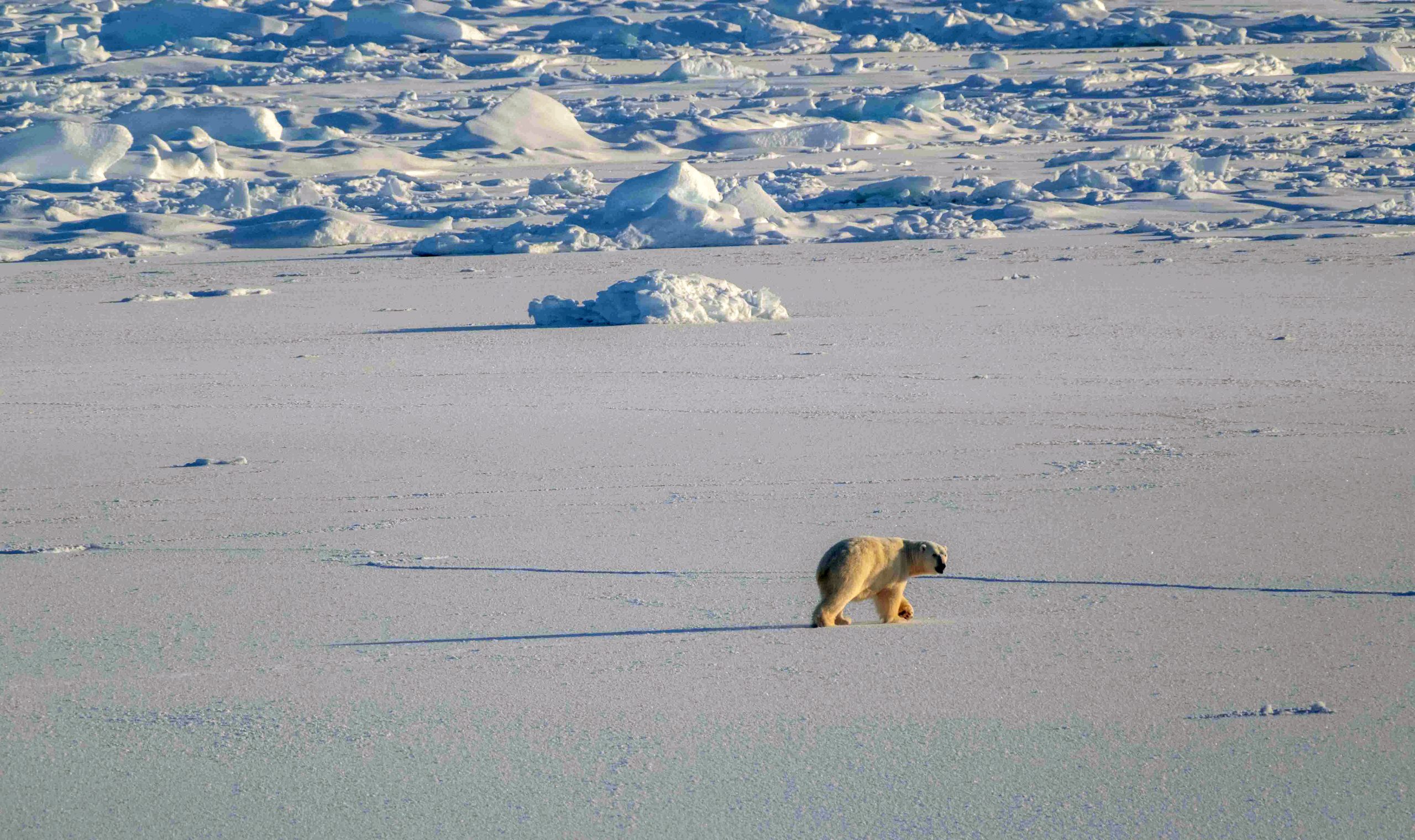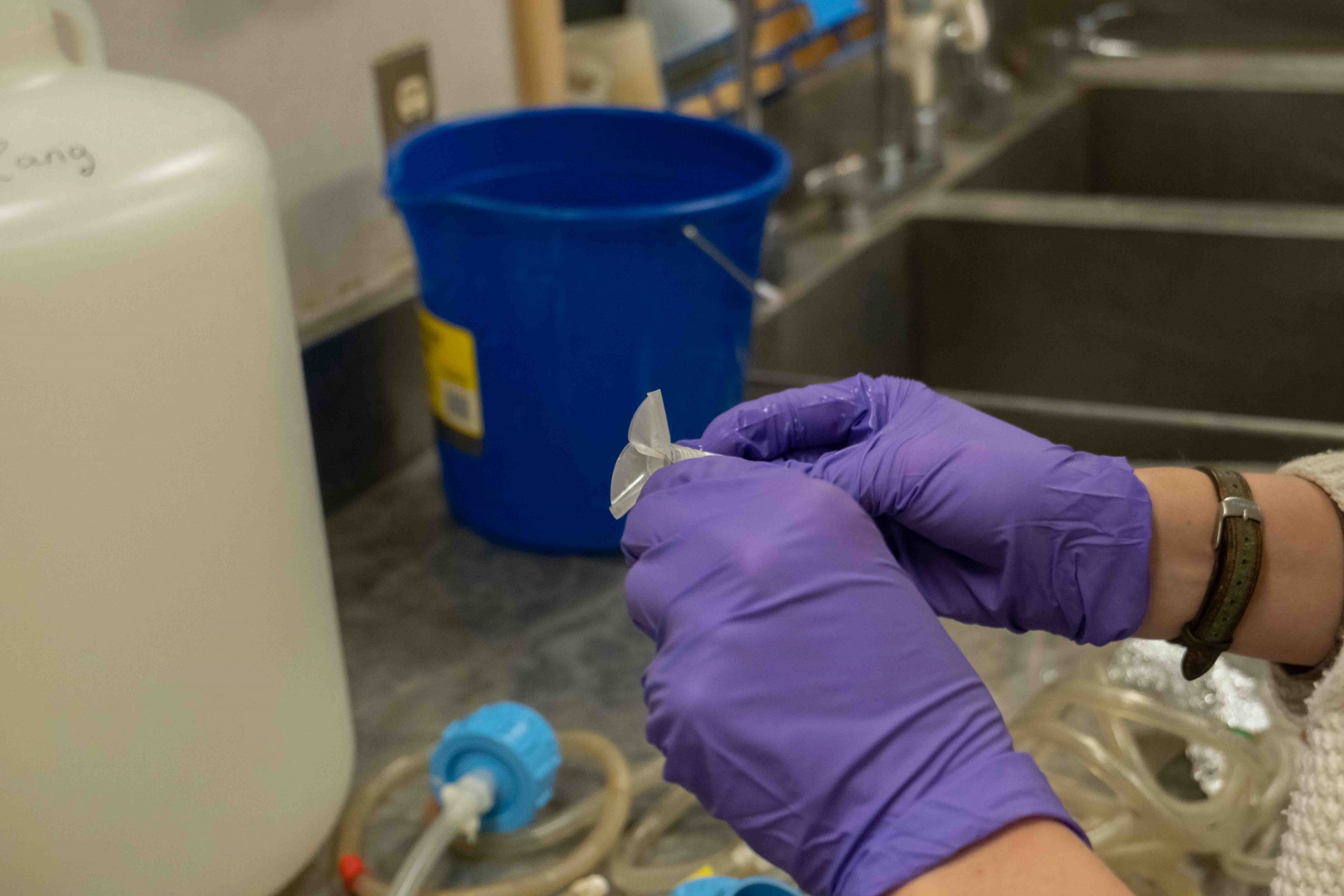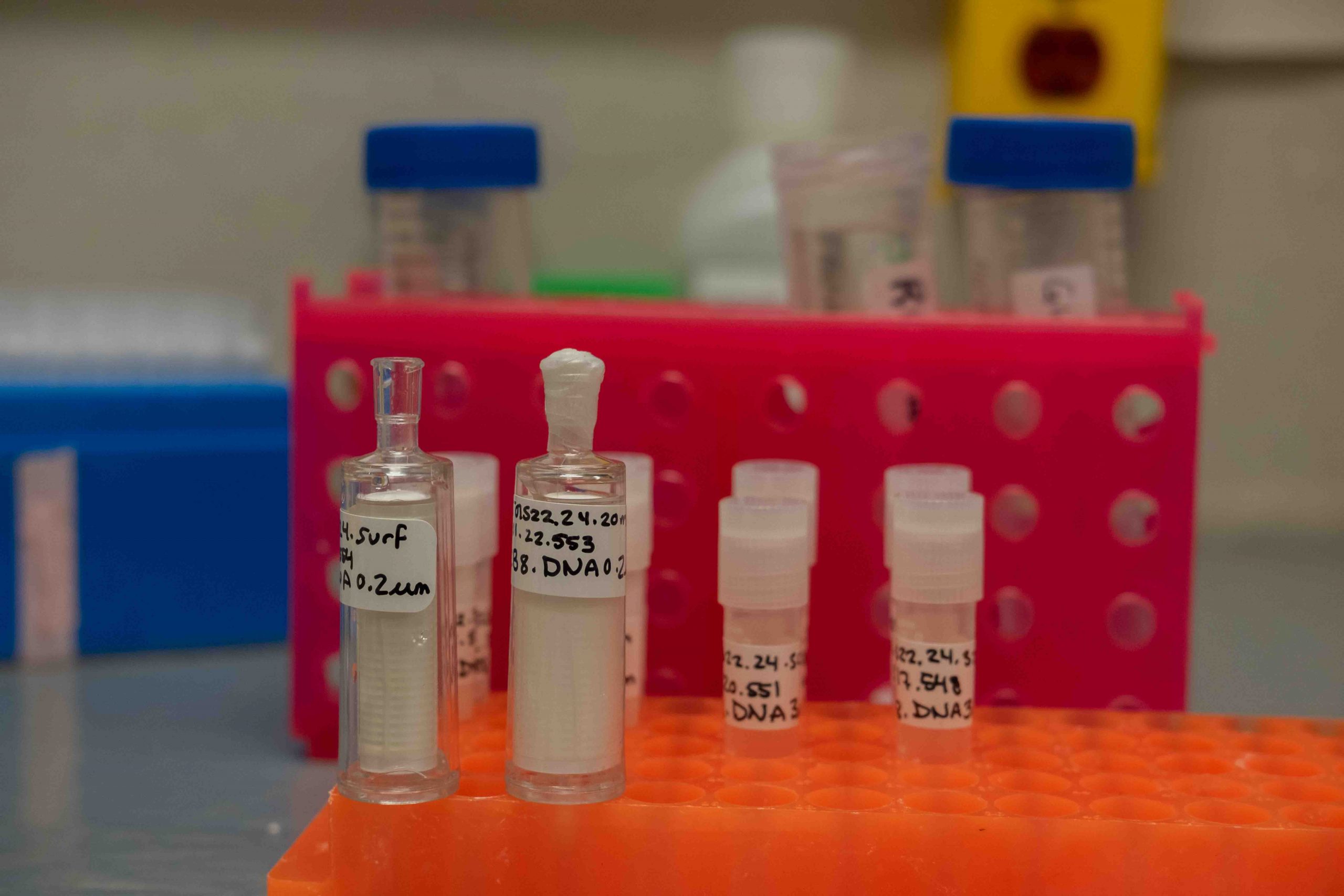Dispatch 16: Life On and Under the Ice
Elizabeth Bailey
October 1, 2022
For her role during the expedition, Susie McLatchie is working on maintaining a dataset of DNA that began in 2015. As a master’s student at Concordia University, her research is focused on understanding the species composition and their ecosystem function of a variety of microorganisms (or microbes) that live in the Beaufort Sea. She does this by collecting many samples from the Niskin bottles at some of our CTD/Rosette Stations.
When she samples, she needs anywhere from 7 to 30 liters of water! Often during a CTD/Rosette cast, if Susie is sampling, she has an entire 10-liter Niskin bottle (or two) dedicated to her sampling. In the lab, she has a three-step filtration process that she follows for each of her sample bottles. This allows for the filtration of three different groups of organisms, which are defined by the size of the organism. The first filter her sample water is run through collects all the living things that are bigger than 3 microns (or 3 × 10-6 meters). From there, the sample water is run through a tube to a second filter paper where the “free living” things live. That is, everything that is between 0.2 and 3 microns in size. Finally, the water is then collected into another container for virus sampling, which is pasted through a third filtration process with a filter that catches everything less than 0.2 microns in size.
Why is it important to know about microbial life in the ocean? Microbes are a key component of the marine carbon cycle. Where phytoplankton take in carbon to form their cells, microbes break down that carbon (and other nutrients) and release it back into the water column. In other words, microbes are responsible for regenerating and recycling nutrients in the surface ocean. Understanding the specific species of microbes in the Beaufort Gyre and what their role in the overall ecosystem can allow for further understanding of this key component of the carbon cycle.
As for life on the ice – a few days ago we saw our first polar bear of the expedition! From what we can tell, it was a lone female. We wished her well and continued on to our next station. We hope to be able to observe other marine life as we continue into the second half of our expedition!



